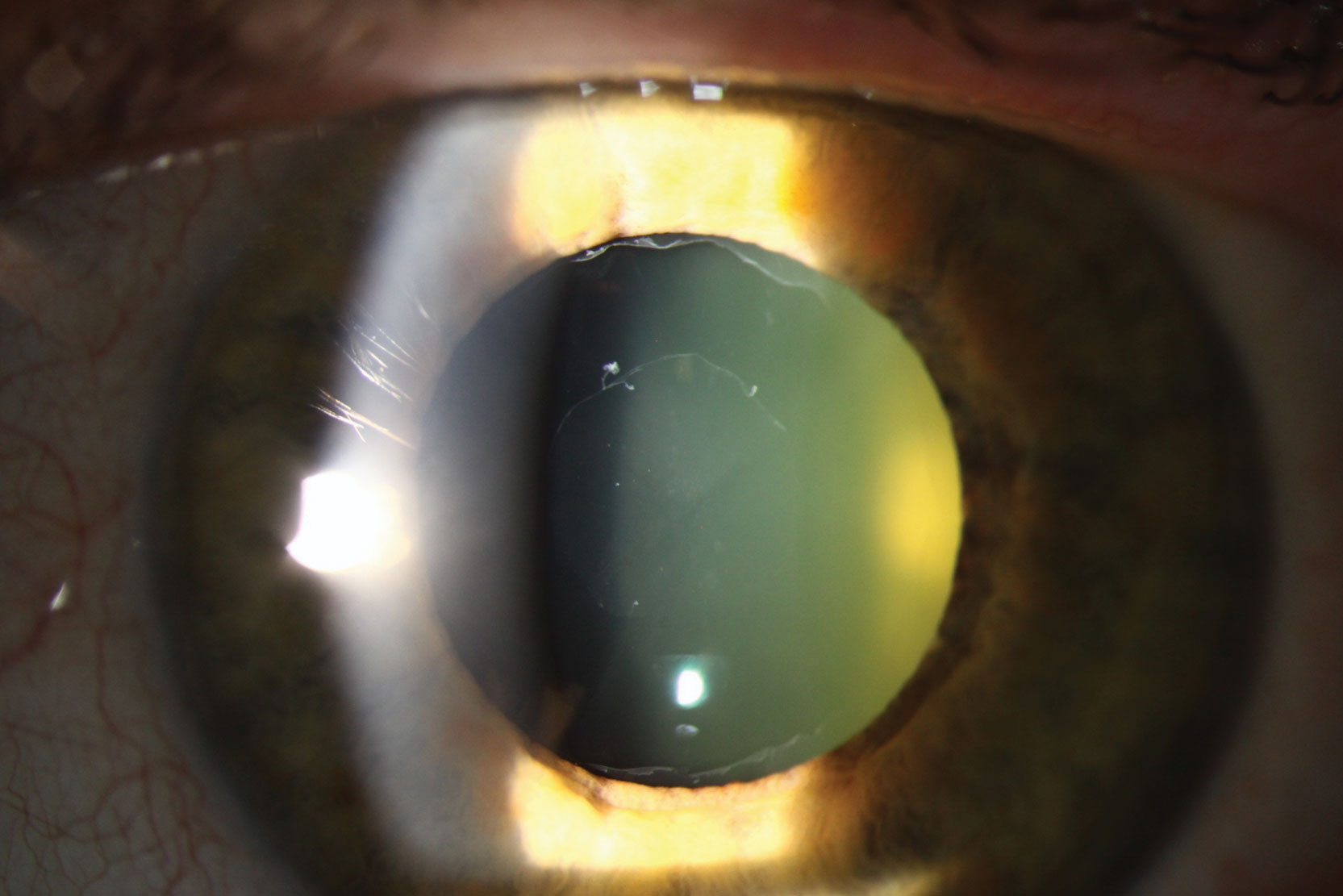 |
A 69-year-old white female with a history of keratoconus, hypertension and early cataract presented for her yearly exam, which revealed fibrillar material deposited around her pupil and on the crystalline lens of the left eye. Pressures were 14mm Hg OD and 13mm Hg OS. She was diagnosed with unilateral pseudoexfoliation and scheduled for a glaucoma work-up. Her primary care doctor, managing her hypertension, was informed of the diagnosis.
 |
| This patient was diagnosed with PXF, a risk factor for glaucoma. Click image to enlarge. |
Pseudoexfoliation syndrome (PXF) is an age-related systemic disease where abnormal crosslinked fibrils progressively accumulate in various organs but primarily the anterior eye. Ocular manifestations present bilaterally but often asymmetrically and may result in cataract or glaucoma. Prevalence ranges from 6% to 10%, more so in women with increasing age. It is associated with a mutation in the LOX1 gene, which codes for elastic fiber components of extracellular matrix, and also with increased ultraviolet light exposure and caffeine intake. PXF is different than true exfoliation from heat or infrared damage to the anterior capsule.
PXF presents as white fibrillary material on the anterior lens surface and has a classic three-zone presentation: a central disc corresponding to pupil size, peripheral deposits and a clear zone separating the two. There may be pigment loss from the iris sphincter, transillumination defects, loss of pupillary ruff, pigment dispersion after dilation, pigment deposition on the iris surface and increased trabecular meshwork pigmentation.
The endothelium may show exfoliative material and reduced cell count. Nuclear cataract, phacodonesis and cataract surgery complications (e.g., capsular rupture, zonular dehiscence, vitreous loss) are all more common.
The greatest risk with PXF is development of glaucoma, with a highly significant correlation between elevated IOP and the degree of pigmentation and fibrillary obstruction of the trabecular meshwork. IOP may rise after dilation due to the release of pigment; therefore, be sure to check post-dilation IOP. Beyond the eye, people with PXF also have a threefold increased risk for hypertension, angina, myocardial infarct or stroke.
| 1. Ariga M, Nivean M, Utkarsha P.; Pseudoexfoliation syndrome. J Curr Glaucoma Pract. 2013 Sep-Dec; 7(3):118-20. |


